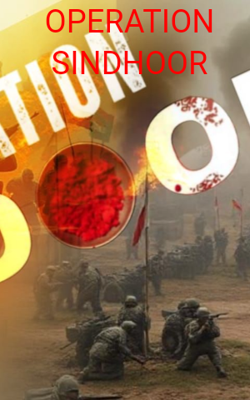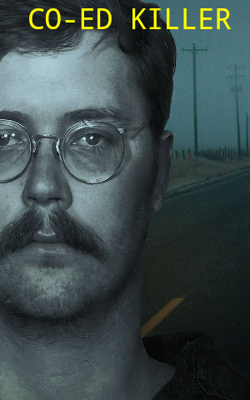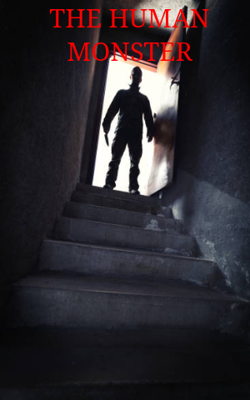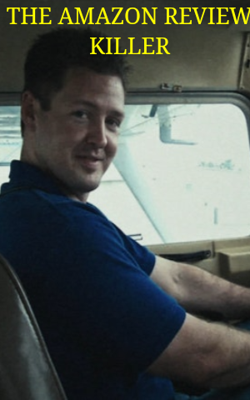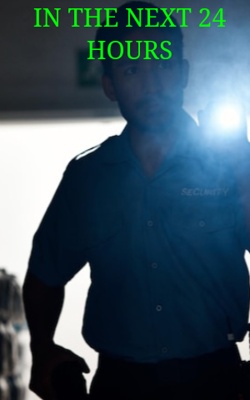1999
1999


NOTE: This story is based on Kargil War and Author’s fiction. Though based on historical events, the story is fictional representation of the war fought by the Indian Army.
13TH JUNE 1999
KARGIL
On 13th June 1999, the first major ridgeline to fall was Tololing in the drass sub-sector which was captured by the Pakistan army after several weeks of fighting, The attacks were lead up to sustained fire assaults from over one hundred Artillery guns, mortars and rocket launchers. Thousands of shells, bombs and rocket warheads wreaked havoc and prevented the enemy from interfering with the assault. In the direct firing were the 155 mm Bofors medium guns and 105 mm Indian field guns that destroyed all visible enemy sangars and forced them to abandon various positions.
With the Tololing complex being captured by the Pakistani soldiers and communication lines cut, General Askar Ahmed ordered two young soldiers: Major Rakesh Singh and Captain Anuj Nair to carry a message to Lieutnant Shyam Keshavan Pandey to attack Tiger Hill complex. They followed the instructions of General Askar Ahmed and informed Lieutnant Shyam regarding the same.
Tololing Complex capture paved the way for Lietnant Shyam Keshavan to launch successive assaults on the Tiger Hill complex from various directions. On 4th July to 5th July 1999, Tiger Hill was re-captured and Point 4875. To the west of Tiger Hill was another dominating feature of Tiger Hill and on 7th July 1999, Major Rakesh Singh recaptured Mashkoh valley. Point 4875 was re-named as “Gun Hill” in honor of the astounding performance of the Gunners in the drass and Mashkoh sub-sectors.
Lieutenant Shyam employed 122mm Grad multi-barrel rocket launchers to directly fight with the Pakistan army. Major Rakesh Singh, Captain Anuj Nair and Lieutenant Shyam reaches Batalik Sector. But, looking everywhere, Rakesh said: “Lieutenant. The enemy was far more strongly entrenched. It could be more tougher and dangerous.”
Looking at them, Shyam replied: “Guys. We are soldiers. The army is the true nobility of our country. So, we should never think about danger.” Almost a month was taken by the containment battle. Artillery observation posts were instituted on dominating heights by Anuj Nair. He bought down the sustained Artillery fire on the enemy continuously by day and night allowing them to rest. On 21st June, 1999, point 5203 was recaptured by Major Rakesh Singh and on 6th July, 1999, Lieutenant Shyam and Captain Anuj Nair successfully re-captured Khaulbar. Within the next few weeks, further attacks were pressed against the remaining Pakistani posts by Lieutenant Shyam in the Batalik sub-sector. Once again, Artillery by Anuj Nair played a crucial role in destroying the enemy’s battalion and logistics infrastructure.
During the Kargil conflict, the Indian Artillery by Anuj Nair fired over 2,50,000 shells, bombs and rockets. Daily from 300 guns mortars and MBRL’s approximately 5,000 artillery shells, mortar bombs, and rockets were fired. Such type of high rates of fire over long periods had not been witnessed anywhere in the world since the Second World War.
11TH MAY 1999 TO 25TH MAY 1999
Ground troops of Lieutenant Shyam Keshavan’s were supported by the Air Force from 11th May 1999 to 25th May 1999 as per the orders of the Indian Prime Minister and Indian Army senior heads and tried to contain the threat, judge the positions of the enemy dispositions, and carried out several preparatory actions. On 26th May, the entry of the Air force General Manoj into combat action represented an exemplar shift in the nature and prognosis of the conflict. General Manoj informed Shyam Keshavan about Operation Safed Sagar formed by the Prime Minister. He motivates Shyam to fight the war, irrespective of winning or losing the war.
Air Force under Manoj’s team carried out about 5000 sorties of all types over 50 odd days of operations. Before Kargil, the western air command conducted the three-week long exercise Trishul. During Trishul, the Indian Air force flew 5,000 sorties with 300 Aircraft using around 35,0000 personnel and engaged targets at high elevations in the Himalayas. Because the Pakistani soldiers and terrorists had positioned themselves at higher altitudes, it gave them an advantage in combat, as they could fire down at advancing Indian troops.
The threat of shoulder-fired missiles was ubiquitous and there was no doubt about this. Pakistani Stringer damaged an IAF Canberra recce aircraft possibly from across the Line of Control. Pakistan shot down two Indian fighter jets while another fighter jet crashed during the operation. Operation, second and third day, the IAF lost one MIG-21 fighter and one Mi-17 helicopters to shoulder-fired missiles by the enemy. Also, one MIG-27 was lost on the second day due to engine failure just after the pilot Mouli had carried out successful attacks on one of the enemy’s supply dumps.
These events went to reinforce the tactics of the IAF in carrying out attacks from outside the stinger SAM envelope and avoid the use of helicopters for attack purposes. Under relatively benign conditions attack helicopters have a certain utility in operations but are extremely at risk in an intense battlefield.
Sensing the trouble, a soldier informs Manoj about the same.
“Sir. More than 100 shoulder-fired SAM’s against our IAF aircraft. It somehow indicates the strength of the enemy air defences in the area but on the other side shows the success of our tactics, mainly after the first three days of this war.”
Manoj patched him up and replies: “Soldier. Due to the strategic plan, not a single aircraft will receive even a scratch.” In the Kargil area, the terrain is around 16,000 to 18,000 feet above sea level. And it was required by Manoj to fly at about 20,000 feet. At these heights, the density of the air is 30% less than at sea level.
This resulted in the reduction in weight that can be carried and also reduces the ability to man oeuvre as the radius of a turn is more than what is at lower levels. The turn’s largest radius reduces the mobility in the restricted width of the valley. The performance of engine in Manoj’s aircraft also deteriorates due to the lesser mass of the air which is going into the jet engine of the flight or helicopter. The trajectory of weapons was also gets affected by the non-standard air density. Hence, the firing may not be accurate. The targets are relatively small in the mountains. So Manoj’s army spread out and are also difficult in spotting visually mainly by pilots in high-speed jets. During the mission, Manoj’s aircraft is shot down by the enemy troops. He is severely injured.
Knowing that the soldiers may loose their hope, Manoj motivates them to fight against the enemy troops by chanting National Anthem through the communication satellite used by Indian Air Force. He hides somewhere in the grass, being cautious about the enemy troops.
Sensing trouble, Pakistan requested the United States of America to intervene, but then President Bill Clinton declined to do so until Pakistan troops were withdrawn from the Line of Control. As Pakistani troops withdraw, the Indian armed forces of Shyam Keshavan attacked the rest of the outposts, managing to get back the last of them by July 26th.
FEW YEARS LATER
JULY 26, 2022
Few years later on Vijay Diwas, which is observed on July 26th every year, glowing tributes are rightly paid to the soldiers who laid down their lives to ensure India’s victory in the historic Kargil war. Thilip Krishna, an young journalist in Madurai, who raises tough questions against corrupt politicians, journalists and TV news channels, decides to put an motivational video about Kargil War. He seeks the help of the Opposition Party leader Vimal. He is paying tributes to the soldiers, who died in the Kargil war.
Seeing the curiosity of Thilip, Vimal takes him to 48-year old Shyam Keshavan, who’s currently living in New Delhi. The 48-year old man invites the young guys eagerly. After some discussions about history and politics, Thilip asked him: “Shyam sir. The nation witnesses another drama of a different kind. A lot of army generals, who never saw an artillery shell fall closer than 2 km, that too during demonstrations in firing ranges, as well as the likes of those who have never seen snow only in Bollywood classics like Kashmir ki Kali and Aarzoo, emerge as great experts on TV Channel.”
“Yes. Some can even be heard yelling their lungs out. They heap praise upon themselves for ensuring India’s victory in Kargil and indulge in a lot of chest thumping from the safe confines of television studios.” Vimal added. Hearing this, Shyam smiled a bit and says: “But there’s a truth behind the fiasco.”
Vimal and Thilip sat to take his points as a note. While, Shyam said: “Kargil war resulted in the loss of more than 500 Indian soldiers and another 1,500 wounded during the war. It gets suppressed in the cacophony. So, even as I salute those young men without whose bravery and sacrifice India could have never won the Kargil war.”
Pausing for a few minutes, Shyam further said: “There is a dark underbelly to Kargil which must be spoken about.”
APRIL 13, 1984
The genesis of the Kargil war can be traced back to 1984, when India took control of what is known as the highest battlefield in the world: The Siachen Glacier. We preempted Pakistan and occupied the glacier on April 13, 1984, following Operation Meghdoot. Apart from India, Siachen is strategically important for Pakistan as well as China. Thereafter, to prevent the Pakistanis from doing the same to us in the thinly held area of Kargil, a division was specially raised by the Indian Army and developed to plug the gaps.
The Pakistani strategy, therefore, was to again create gaps in Kargil, and to raise and train enough forces from locals from their side of Kargil and the Northern Areas. Their strategy was also to replace regular troops from ground-holding roles and use the regulars for capture of areas not held by India in Kargil. For Pakistan, a total secrecy in the military build-up was to be maintained over the years.
In the early 1990s, Indian intelligence agencies detected that Pakistan had raised 10 Northern Light Infantry (NLI) battalions. The issue was discussed in detail between Military Intelligence (Military Intelligence Directorate) and Military Operations (Military Operations Directorate). During these discussions, it was agreed that these new raisings were intended to relieve regular troops from ground holding roles but how the relieved regular troops would be used was not vigorously discussed and left at that due to the bizarre logic that we did not have enough troops to counter that. Pakistan resorted to two steps to create gaps in Kargil again. First, they kept the Kargil Sector absolutely quiet for years. Second, they inducted terrorists into the Kashmir Valley in large numbers. As anticipated by them, our generals reacted to the infiltration by moving the division specially meant for Kargil to the Valley. Kargil was left to the Kargil Brigade, with very large gaps.
At this point, it would be pertinent to mention that in 1980, when I was company commander of the Kaksar Company in Kargil, Pakistan had intruded onto a height named Point 5108. I was tasked to capture that point, and was successful. The Pakistanis were evicted from Point 5108. However, in later years, India allowed this strategically important height to be occupied by Pakistan. There is no record of any inquiry about it even later. Pakistan also captured other features in the Kargil sector like the Dalunang Bunker Ridge and Sangruti, besides moving a long-range air defence gun to Point 5108 in a direct firing role. This gun hit our vehicle convoys on a stretch of about 14 km and made troop movement very risky and slow. We suffered many casualties there.
After taking over as Chief of Army Staff in October 1997, General Malik took certain decisions which belied military strategy and logic. These actions are all on record. He inter-changed the northern and southern army commanders, as a result of which both officers were new to their jobs. It takes about a year for an army commander to comprehensively study and assimilate all details of the area under his vast command, to understand the working style of his junior commanders, to explain his concept of operations and to project his military personality upon the command. These changes caused the greatest damage prior to the war. The northern army commander, who was transferred out, was thorough in his knowledge of the ground since he was, prior to this assignment, the corps commander at Srinagar and later the army commander. He had, in fact, ordered a standing regular army patrol to be deployed in the Batalik sector, which had the largest gap in the eastern part of Kargil. This patrol was, however, removed by the General-Officer-Commanding of Kargil Division, Major General V.S. Budhwar. When I took over the command of the brigade, known popularly otherwise as the Kargil Brigade, in June 1998, I was not even informed about this.
Further, the Director General of Military Operations (DGMO) was changed. General Verma, the DGMO, was made the military secretary and General Vij was brought in as DGMO. Battalions and battalion commanders were changed. Brigade commanders were changed. The deputy GOC was posted out and the new incumbent was sent on premature retirement during the war while a third one was brought in. Frontline company commanders were also posted out during the war.
The most important appointments – that of the brigade major and GSO-3, my principal operations staff officers – were posted out during the war. This resulted in the fact that every single important appointment – from army commander down to company commanders, and from DGMO down to brigade major and the GSO-3 – were new to their jobs during the crucial period of the Kargil War.
Furthermore, battalions that had been holding the gaps against Pakistan were removed thereby giving the enemy a clear and unopposed run. General Malik himself left for Poland when the war had already begun and the Kargil ammunition dump had been blown off. He did not return to the country until May 20.
Earlier, the corps commander had brought in a brigade to thwart enemy operations in Dras sector, where high-profile objectives including the Tiger Hill, Tololing, Mashkoh Valley, Point 5140 and Point 5608 are located. However, just before our attack was to be launched and the troops had already started moving, the COAS stopped the operation and ordered the brigade to move out of Kargil sector to the Kashmir valley. This is a fact that is recorded in the Kargil Review Committee report.
On taking over the brigade in June 1998, I conducted an extensive reconnaissance of the LOC and a detailed analysis of our own defences, enemy deployment, intelligence inputs, and the vulnerability of our own area. This revealed an enemy buildup and an enhanced threat perception which required a relook of defences and a re-prioritisation. Therefore, I briefed the GOC and also the COAS. A detailed report, including on the vulnerability of Tiger Hill and other heights was prepared and discussed with the division commander, Maj Gen Budhwar. He wanted the same to be war gamed, which was done, and he was briefed in detail sometime in September/October 1998. Instead of releasing permanent defence stores, he again directed me to give him a presentation at Leh, which I did. I asked for defences on Tiger Hill, Talab (which is ahead of Tiger Hill), Point 5608 on the LOC (a small southern part of it was the temporary post of Bajrang) and other locations in writing.
A report was sent to the divisional HQ on January 30, 1999. But the division commander refused to release the necessary defence stores and equipment. Nothing was heard till the first week of May 1999, when these were denied in writing by the division HQ. At that time, my brigade and I were already grappling with the enemy.
Though I made written requests for aerial photographs, aerial photo flights and satellite imagery, these were never supplied. Helicopters that were meant to be located in Kargil were shifted to Leh and were not permitted to fly within 10 kilometers of the Line of Control (LoC). Since the helicopters were stationed at Leh, they had to cross Fatula Pass on their way back before 12 noon. As a result, we had just 10 minutes of reconnaissance time on the day they were made available. And they were rarely made available.
Again, no mines could be laid during the war as all mine marking tapes had been taken by the GOC to Leh for the purpose of marking the ground for renovation of the garrison there and for construction of the infamous zoo. Frontline fighting troops and technical support troops were not only ordered to catch animals and birds but also to build and fabricate cages for the zoo. Though there was no bar by higher authorities on firing of artillery, local restrictions had been imposed upon me. I was not permitted to use artillery, whereas Pakistan used its artillery to hammer us at will. The Leh Division did not have an Operations Order (Op Order). No one knew exactly what to do when it was required by everyone for executing their roles. There was no clear channel of communication with this division. During the inquiry, all that officers of the division could produce in terms of an Operation Order was a pencil-written draft by some GSO-1 Operations of 1991 vintage.
The Strike Corps were rendered ineffective as tanks had been mothballed (greased) and their crew had been sent to perform infantry and police jobs of road opening in the Kashmir valley. De-mothballing and marrying up of these troops require anywhere between one and two months. The then MGO confided to a journalist that the tank ammunition was down to two days of contact rate fighting.
Our only major communication centre housing the Tropo-Scatter was burnt in an accidental fire just before the war. The inquiry for this crucial loss, as also the inquiry regarding the blowing up of the Kargil ammunition dump, was hushed up as war losses.
The division which was raised for Kargil was temporarily moved out to the Kashmir valley for anti-terrorist duties thereby leaving wide gaps which were temporarily held by transiting battalions. The division was not brought back for its primary task of defending Kargil. Also, General Hukoo’s Division – he had earlier commanded the Kargil Brigade and was well versed with its details – which was a reserve for Kargil was not moved in despite being available. A new division was brought in its place which was not familiar with the area.
A brigade headquarter was moved in without any additional troops in September-October 1998 but not given any operational task for seven to eight months. It, in fact, remained totally idle near Leh till 20 days before the war. And after taking over full charge of Dras and Mashkoh areas, they were shifted out elsewhere, creating severe problems of command and control. This denuded the Dras and Mashkoh areas of any troops and reserves. It was only when the enemy had reached right on the Srinagar-Kargil Road that I, with my brigade major and staff captain, were sent there to stall their onslaught. And we did push them back to recapture important positions and restore unhindered movement on the Srinagar-Kargil Road.
The day on which the Kargil operations began, the Army Commander, Lt. General H.M. Khanna, was in Pune attending to his personal affairs. The corps commander, who was also in Pune for his wife’s surgery, returned immediately though. These are not normal events in the working of the army.
Another serious issue that can only be answered by those in charge at the time is why Point 5353, which not only dominates the Zojila-Kargil Road but also the alternative route from Dras to Kargil, was left with the enemy. Also, before I handed over charge, I had captured and established a battalion (minus) behind the enemy on Point 5140. However, this battalion, which was one of the greatest tactical achievements by us, was removed and the enemy allowed to occupy that. This is the topmost point of Tololing.
No general officer was ever held responsible for all these glaring ill-conceived decisions. All of these events, which weakened our effort (to use the mildest words) before and during the war, need serious investigation. The same mindset of brushing things under the carpet is one of the reasons why the Chinese were able to prepare, concentrate and move to Eastern Ladakh last year, occupying territory up to Finger 4 at Pangong Tso. During the war, Major Rakesh Singh and Captain Anuj Nair eventually died while fighting with the enemy troops.
PRESENT:
“Though I was removed from service, there was no charge against me either in terms of professionalism, valour or anything concerned with fighting the war. In fact, I was praised in writing in my ACR (compiled after I was removed from the Kargil command). The action against me was only for making photocopies of letters which contained 68 pages written to General VP Malik and getting them delivered to my residence (my Ops. Room bunker). And, that I had got these photocopies delivered through a messenger instead of an officer. I am told that others also removed documents from the Directorate of Military Operations to make photocopies.” Ex-Lieutenant Shyam told to Thilip.
“Sir. What happened after the Kargil war? Do you blame anyone for this war?” asked Vimal and Thilip, to which Shyam was silent for a while. Then, he said about the war.
“The Kargil War is now more than 22 years behind us. The corps commander including Manoj has since died, while other high-ranking officials, including the army commander and his chief of staff, the DGMOs, the MSs, the DGMI, the divisional commander and other brigade commanders are already very old. A proper inquiry involving some of these old generals and others may reveal several issues. These revelations may have serious implications for the national security of India.”
“Do you blame anyone for this war sir?” asked Thilip.
After drinking some water, Shyam said: “I do not wish to blame anyone and have submitted all this information in the interest of the nation. Only an independent inquiry can point to the shortcomings of the military in the war. The criminal justice system of India is one of the most unjust. My case, in which I have challenged the treatment meted out to me by the Army, has been hanging fire for the past 20 years in courts, including for about 12 years in the Armed Forces Tribunal in Chandigarh. Unless the Chief Justice of India takes suo moto cognizance and orders an inquiry under the supervision of the Supreme Court, the truth and vital facts affecting the security of India will remain buried forever.”
Thilip and Vimal seeks his blessings. They leaves from his house. While leaving the house, Shyam stopped them and gave a newspaper, listing the gallantry awards given to the Indian Army soldiers, who took part in the Kargil war.
“I think this could be even more helpful for you Thilip.” Shyam said and goes after his kitchen. Since, his food is ready. While, Thilip takes a note on Gallantry awards:
Major Rakesh Singh, 18 Grenadiers, Param Vir Chakra (Posthumous)
*Lieutenant Shyam Keshavan, 1/11 Gorkha Rifles, Param Vir Chakra.
* Captain Vikram Batra, 13 JAK Rifles, Param Vir Chakra, Posthumous (In pic)
* Rifleman Sanjay Kumar, 13 JAK Rifles, Param Vir Chakra
* Captain Anuj Nair, 17 JAT Regiment, Maha Vir Chakra, (Posthumous)
* Major Rakesh Singh, 18 Grenadiers, Maha Vir Chakra, Posthumous
* Major Mariappan Saravanan, 1 Bihar,
Vir Chakra, Posthumous
* Squadron Leader Ajay Ahuja, Indian Air Force, Vir Chakra(Posthumous)
Seeing the brave officers and their moustache through newspapers, Thilip and Vimal quoted: “These people are the real heroes of our country.” Holding their hands together, the guys walked inside the airport.





















